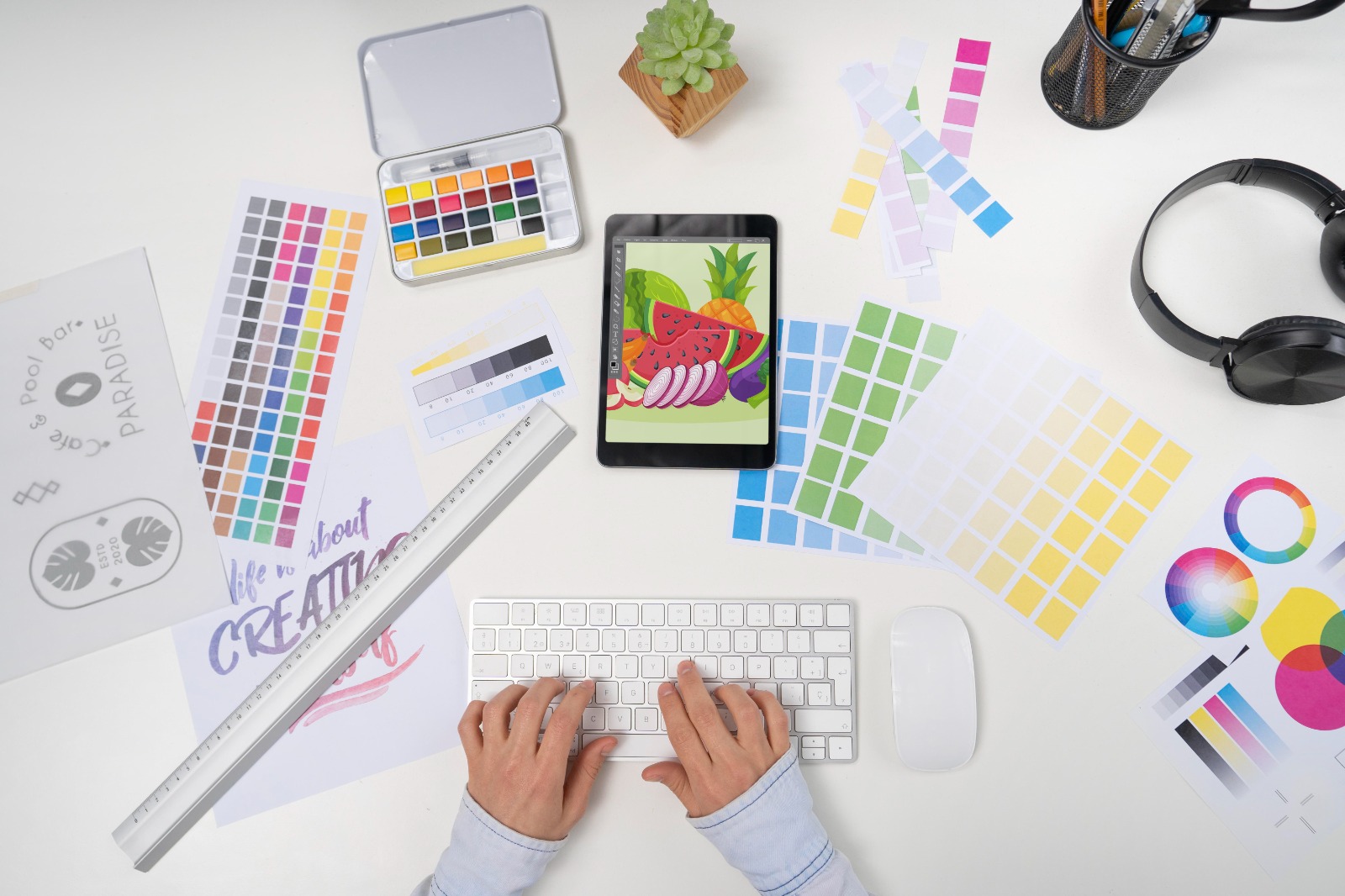Color is a powerful tool in the hands of a graphic designer, capable of evoking emotions, conveying messages, and influencing behavior. Understanding color theory—such as the principles of hue, saturation, and value—allows designers to create harmonious and impactful color palettes that resonate with their audience.
The Ultimate Guide to Graphic Design

Are you ready to dive into the colorful world of graphic design? Whether you're a seasoned artist or just dipping your toes into the creative pool, graphic design is an essential part of our visual landscape. From captivating advertisements to sleek website layouts, graphic design is everywhere, shaping the way we perceive and interact with the world around us. Let's embark on this journey together as we explore the fundamentals, techniques, and endless possibilities of graphic design.

Graphic design is the art of visual communication through the use of images, typography, and layout techniques. It involves conveying ideas or messages in a visually appealing and effective manner. Whether it's designing a logo, creating a brochure, or developing a website, graphic designers play a crucial role in shaping how information is presented and perceived.
Over the years, graphic design has undergone a remarkable evolution, influenced by technological advancements, cultural shifts, and artistic movements. From the early days of hand-drawn illustrations to the digital revolution of the 21st century, graphic design has continually adapted to meet the needs of a changing world.
In graphic design, there are several key elements that designers use to create visually appealing compositions. These elements include line, shape, texture, color, and space. By understanding how these elements work together, designers can effectively communicate their message and engage their audience.
Alongside the elements, there are also fundamental principles that guide the practice of graphic design. These principles include balance, contrast, emphasis, rhythm, and unity. By applying these principles, designers can create designs that are not only aesthetically pleasing but also functional and meaningful.
In today's digital age, graphic designers have a plethora of tools at their disposal. From industry-standard software like Adobe Photoshop and Illustrator to online platforms such as Canva and Figma, there's no shortage of options for bringing creative visions to life. These tools empower designers to experiment, iterate, and collaborate like never before.
Typography is a cornerstone of graphic design, encompassing the art and technique of arranging type to make written language legible, readable, and appealing when displayed. From elegant serif fonts to modern sans-serifs, typography plays a vital role in shaping the tone and personality of a design.

-
Color Theory
-
Composition and Layout
The composition and layout of a design determine how information is organized and presented to the viewer. By carefully arranging elements such as text, images, and whitespace, designers can create visually balanced and easy-to-navigate designs that guide the viewer's eye and communicate the intended message effectively.
-
Graphic Design in Marketing
In the realm of marketing, graphic design plays a crucial role in capturing attention, building brand identity, and driving engagement. Whether it's designing eye-catching advertisements, crafting compelling social media graphics, or developing memorable brand assets, graphic designers help businesses communicate their value proposition and connect with their target audience.
Advancements in technology have revolutionized the field of graphic design, enabling designers to push the boundaries of creativity and innovation. From digital illustration tools to 3D rendering software, technology continues to expand the possibilities for graphic designers, allowing them to create immersive and interactive experiences across various platforms.
With the demand for visually compelling content on the rise, careers in graphic design offer exciting opportunities for creative individuals. Whether you're interested in working for a design agency, freelancing as a independent designer, or pursuing a corporate design role, the field of graphic design offers diverse paths for professional growth and fulfillment.
-
Challenges and Solutions
While graphic design offers boundless opportunities for creativity, it also comes with its fair share of challenges. Whether it's navigating tight deadlines, managing client expectations, or keeping up with evolving industry trends, designers must adapt and problem-solve on a daily basis. By fostering resilience, creativity, and collaboration, designers can overcome obstacles and thrive in an ever-changing landscape.
-
Importance of Graphic Design
Graphic design isn't just about making things look pretty—it's about communication. In a world inundated with information, graphic design helps distill complex ideas into clear, concise visuals that resonate with audiences. Whether it's sparking curiosity, conveying emotion, or driving action, graphic design plays a pivotal role in shaping how we perceive and interact with the world around us.
-
Future Trends
As technology continues to evolve and societal trends shift, the future of graphic design is ripe with possibilities. From augmented reality to immersive virtual experiences, designers are poised to explore new frontiers and redefine the boundaries of visual communication. By staying abreast of emerging technologies and cultural trends, graphic designers can continue to innovate and inspire.

Conclusion
In conclusion, graphic design is more than just a profession—it's a passion, a craft, and a means of expression. Whether you're a seasoned designer or a budding enthusiast, the world of graphic design invites you to unleash your creativity, communicate your ideas, and leave your mark on the visual landscape. So what are you waiting for? Let your imagination soar and dive into the exciting world of graphic design today!

Frequently Asked Questions
Graphic designers often use software like Adobe Photoshop, Illustrator, and InDesign for various design tasks, from photo editing to layout design.
Yes, graphic design can be a rewarding career choice for those with a passion for creativity and visual communication. It offers diverse opportunities for growth and expression in various industries.
To excel in graphic design, it's essential to have skills such as creativity, attention to detail, typography, layout design.